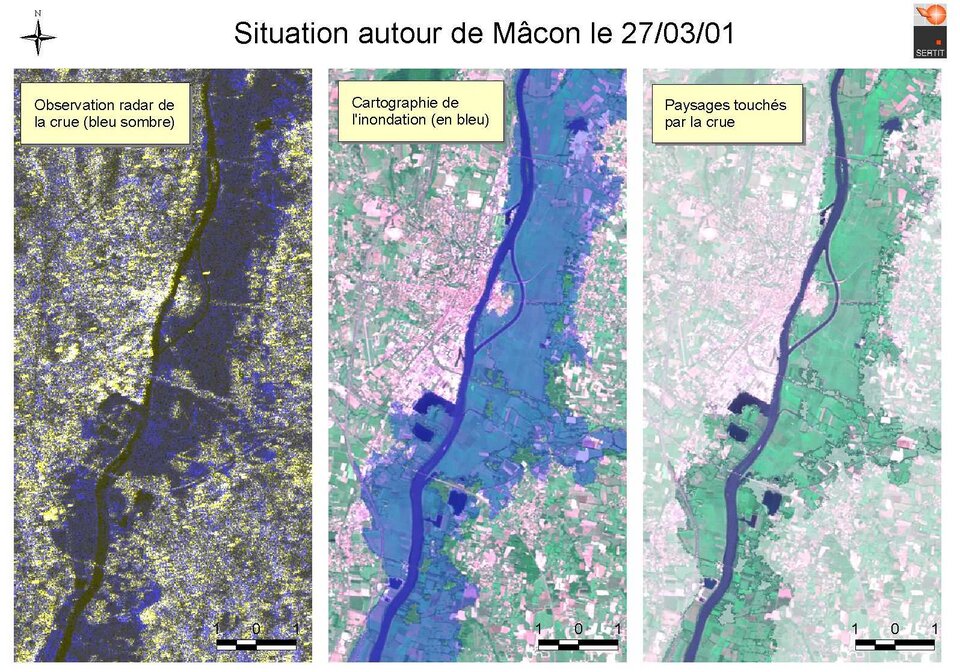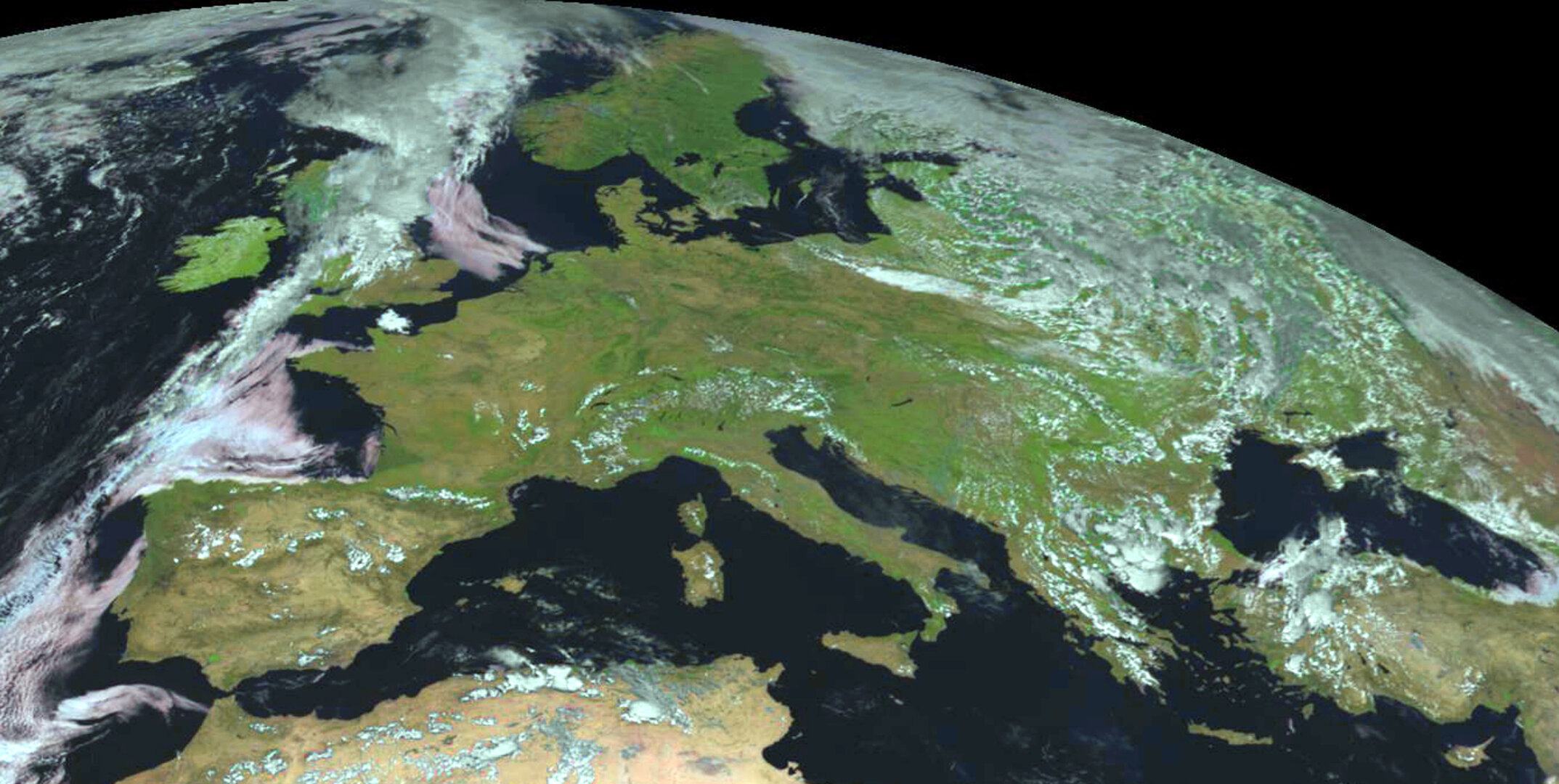Plea in favour of environmental monitoring
We have become accustomed to the presence of satellites observing the Earth, its environment, the changes it undergoes and the upheavals that disrupt the lives of human beings. In his new book, José Achache, director of Earth observation programmes at ESA, presents his vision of the crucial role played by satellites in disaster prevention and crisis management.
He also shows how developing and deploying a global monitoring system for the environment and security could constitute a source of technical innovation desperately needed in Europe.
Every year, natural disasters such as earthquakes, floods, droughts and storms take a heavy toll on the human population. Climate change linked to the greenhouse effect is giving rise to new extreme situations, one recent example being the heat wave that struck Europe in summer 2003. At the same time, demographic change, with half of all human beings now packed into urban areas, and the emergence of new risks - from new epidemics to industrial or public-health disasters - have made our modern society more vulnerable in the face of threats now reaching global proportions.

A geophysicist by training, José Achache was appointed as head of Earth observation programmes at the end of 2001, his career having previously taken him from the Institut de Physique du Globe de Paris, to the Bureau de Recherches Géologiques et Minières and the Centre National d'Études Spatiales. His experience has given him a broad, clear vision of the potential offered by current and foreseeable technological advances. According to him, these capabilities could as of now meet needs extending well beyond just the scientific sphere and benefiting all of mankind.
Global risk, global response
As with terrorism, which most of the industrialised nations are battling against, environmental risks endanger people's lives on a global scale. Those risks, like terrorism, call for a global response, explains José Achache, in his newly-published book "Les sentinelles de la Terre". He thinks the fight against climate change will be a long one, conducted on several fronts - scientific, technological, economic and political. Keeping the environment safe will require a great deal more investment, innovation and technological input.

Preventing natural or man-made disasters involves improving our knowledge of our environment and the way it operates. This will not only help to predict events, but also avoid or reverse policies likely to affect its delicate balance.
To achieve that, Achache proposes that States acquire an environmental intelligence capability. In his view, the first step would be to develop an environmental information system. This would serve both as a global surveillance and forecasting system and a political instrument for worldwide governance and security. It would require the coordination of space and terrestrial observation facilities and the modelling capacity of all partner nations.
Aids to understanding, warning and managing
Such a project already exists in Europe: the Global Monitoring for Environment and Security (GMES) programme. Backed by ESA, this global, independent, information and decision support system is intended to provide a framework for defining and implementing European Union policy. Designed as a genuine intelligence and operations system on the model of military systems, GMES is dedicated to the security of citizens and the control of global change and works by combining satellite observations with data gathered in situ. The scope of GMES is extremely broad: negotiation and verification of international environmental agreements (in particular the Kyoto Protocol), civil and transport security, management of agricultural, forest and water resources, health and food safety, pollution control, development and humanitarian aid, peacekeeping, etc.

José Achache, who co-chairs the GMES Steering Committee, can see satellites, with their unique capabilities, playing a crucial role. He points out that satellite observations make it possible to take in natural phenomena at a single glance, regardless of scale (from the ocean basin to understand El Niño, to a dwelling to assess flood damage) or duration (from a decade to monitor changes in the ozone layer, to just one hour to anticipate the onset of storms).
In addition, the precision of measurements - a few centimetres in the case of ocean levels or a few millimetres for ground motion - and their continuity over time make it possible to construct models to understand environmental change and eventually identify the processes likely to lead to degradation.
Apart from observation, satellites also have global communication capability, independently from terrestrial infrastructure, enabling monitoring networks to be set up to warn of crisis situations or, if a crisis does develop, ensuring emergency communication networks are formed to deal with it.
Europe as precursor

Europe's pioneering role goes back a long way. For a quarter of a century, ESA and its Member States have been developing tools and expertise recognised worldwide for observing the Earth, its atmosphere, surface, oceans and ice caps.
In 1978, Meteosat had already placed Europe at the forefront of operational meteorology and now, with the second generation, it has the most modern observation system in geostationary orbit, according to Achache. The next satellites, which were being prepared, would improve Europe's atmospheric sounding capabilities and consolidate its leading position in weather and climate modelling.
Over the years, the Old Continent has built up a solid reputation for its oceanography and glaciology programmes, particularly its radar satellites. Europe is at present the main source of civil data in this area. It is significant that it is leading the field with derived applications, such as the observation of motion linked to seismic or volcanological activity, and also land subsidence in urban areas resulting from construction work or the extraction of water or gas.

GMES provides this European capacity with a framework for developing and strengthening its competitiveness in the area of environmental applications and security, at a time when Europe is seeking to free itself from dependence on data from American sources, particularly military data, needed for risk and crisis assessment.
José Achache believes these resources and the know-how developed in Europe can be mobilised to set up the global system for disaster prediction and environmental surveillance that he is hoping for. These "Earth watchers", intended to provide warnings of further disruption on the part of nature, will work to ensure the planet and its inhabitants are safe and secure. For Europe, the development of these Earth watchers will also be a driving force for technological innovation and progress.
"Les sentinelles de la Terre", by José Achache, is published in French by Hachette Littératures.
For further information, please contact:
ESA - Media relations division
Tel. : 33 (0) 1 53 69 72 99
Fax: 33 (0) 1 53 69 76 90






